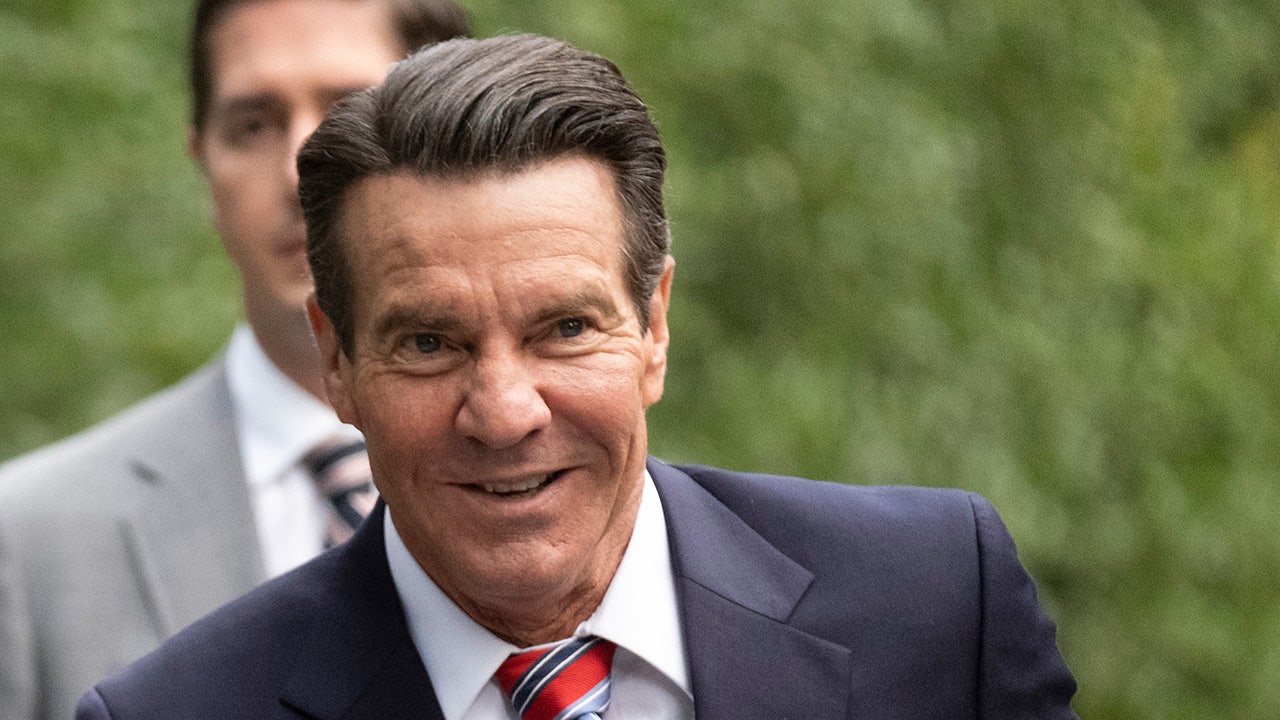The next quarter century will bring significant climate danger to millions of Americans living in disadvantaged communities, who will not only experience greater exposure to life-threatening extreme heat but also greater hardship due to reduced energy reliability, according to a new national level report.
The report, released Wednesday by the ICF Climate Center, examines global warming projections in Justice40 communities, those identified by the federal government as marginalized, underserved and overburdened by pollution. The Justice40 Initiative was established under President Biden's strategy to address the climate crisis, which aims to channel 40% of the benefits of certain federal investments in climate, energy and housing to these communities.
Aggressive and impactful reporting on climate change, the environment, health and science.
But the report outlines a bleak future for residents of these areas, including many in California.
In a moderate emissions scenario, in which current fossil fuel consumption peaks in the coming decades and then begins to decline, at least 25 million people in disadvantaged communities will be exposed to health-threatening extreme heat annually. by 2050, according to the report.
In a high-emissions scenario, reflecting greenhouse gas emissions unchanged “as usual,” that figure rises to 53 million people. Extreme heat is defined as at least 48 days of health-threatening heat per year.
“Those numbers surprised us a little bit: They're large and significant,” said Mason Fried, one of the report's authors and director of climate science at ICF, a global consulting firm. “Possible exposure to extreme heat appears to fall disproportionately on disadvantaged communities.”
The report also notes that around 8 million people in Justice40 communities are already exposed to heat waves that can affect their energy systems, including causing power outages. But by 2050, that number could rise to 34 million in a moderate emissions scenario and 43 million in a high emissions scenario.
It will not just be disadvantaged communities that will experience the worsening effects of extreme heat, which is one of the deadliest and most widespread climate risks.
Under a moderate emissions scenario (the most likely), 41 million Americans outside Justice40 communities will also be exposed to 48 or more days of health-threatening heat by 2050, and 44 million will experience energy-threatening heat, according to The report.
However, the effects will not be the same. Many underserved communities are already at a disadvantage when it comes to extreme heat for a variety of reasons, including the average age of the population and pre-existing health conditions such as diabetes and heart disease, which can be exacerbated by heat.
Lack of tree canopy, lack of air conditioning at home or work and inefficient infrastructure can also play a role, said V. Kelly Turner, associate director of urban planning at UCLA who did not work on the report.
“Everyone is going to be exposed to more heat, so the question really is: how much more exposed?” Or is the question how many people live with inadequate infrastructure to keep them safe in hot weather? said Turner, who also co-directs UCLA's Luskin Innovation Center.
In places like Los Angeles, temperatures can vary by several degrees between neighboring areas simply due to differences in vegetation, asphalt, and the built environment.
Still, many Angelenos are better acclimated to higher temperatures than people in colder parts of the state or the country, Turner said.
“It's about what you're used to versus what you're exposed to,” he said.
That's why the report's findings on energy impacts are particularly worrying.
“It's those northern latitude communities where this could become particularly difficult if the power grid fails,” he said. “In Northern California [and places] “When you're not thinking about the heat all the time, that's where maybe you're not as prepared.”
In fact, the report's projections show an intensification of potential exposure not only in traditionally warm areas, but also in regions that have not historically experienced very high temperatures, such as the Northwest and Midwest. Fried referenced the 2021 Pacific Northwest heat dome, which caused more than 650 deaths in the U.S. and Canada.
“It's a phase change,” he said. “It's a fundamentally different type of exposure, which could have enormous impacts in the future.”
In fact, the report shows, most of California will fare better than other parts of the country, such as Texas and the Southeast, which are expected to experience some of the worst heat results by 2050.
Only a few Justice40 communities in the Golden State will see 48 or more days of health-threatening heat in a moderate emissions scenario, with additional communities appearing in a high emissions scenario.
But the Central Valley and Southeastern California light up like a summer fireworks show when it comes to power-impacting hot days, the report shows, meaning many people in those areas could experience power outages. and suffocate without air conditioning or other forms of relief.
“It doesn't take much, or a big increase in extreme heat, to reach a tipping point,” Fried said.

Increases in hot days could impact energy systems across the country by 2050, including California. The projections are worse in a high emissions scenario.
(ICF/ClimateSight)
The report outlines a series of high-level recommendations for policymakers, such as identifying communities at risk and engaging stakeholders in planning and preparing for these scenarios. He also notes that more federal funds are being made available to address extreme heat through Biden's Inflation Reduction Act and Bipartisan Infrastructure Act.
Among those federal efforts are two new national centers to support community heat monitoring and resilience, which were announced this week by the U.S. Department of Commerce and the National Oceanic and Atmospheric Administration.
One federal center will be based in Durham, North Carolina, and the other will be at UCLA and led by Turner, who described it as “a collaborative approach to learning from existing efforts to prevent the worst consequences of extreme heat.” .”
The center will work to bring nonprofits, cities, academic institutions, and tribal and international communities into the same room to draw general and specific lessons and help determine the best paths forward, Turner said. It will also fund 10 communities over each of the next three years with the goal of providing recommendations to the federal government on how best to “support local communities as they transition to a more heat-resilient future.”
Turner said California and Los Angeles are doing good work, but should look beyond efforts like urban tree canopy improvements and fresh roof and pavement installations. There is more to do, including a deeper analysis of heat exposure in specific locations and regulations that may have an effect.
Their recommendations include rethinking how the Federal Emergency Management System assesses heat risk and property damage; ensure vulnerable communities have the technical support they need to apply for grants and obtain funding; create energy assistance programs for low-income housing; and pass legislation to provide cooling to all residents, Turner said.
He pointed to California's plan to establish the state's first heat wave rating system as a positive example, as well as new heat monitoring tools from NOAA and the U.S. Centers for Disease Control and Prevention.
The ICF report comes at a time when heat records are continually being broken around the world, with 2023 considered the hottest year on record on the planet.
What's more, the projections for 2050 are for a “typical year,” but Fried said recent experience has shown that many years can be outliers due to El Niño or other effects that can make them much warmer, with potential even worse results.
That's why it's not only important to help vulnerable populations prepare for a warmer future, but also to continue pushing to reduce dependence on fossil fuels and other sources of planet-warming emissions that are driving the scenarios outlined in the report. , said.
“If we take steps to mitigate emissions, we can do better than what is shown here,” he said.












